
News . Feature Stories . 'The entrepreneurship is really critical'
News
October 14, 2016
'The entrepreneurship is really critical'
Nagelberg brings artistry, hard work to ceramics

Photo by Rob Muller/CIA
By Clint O’Connor
In 1994, ceramist Seth Nagelberg was feeling restless. He planned to go to graduate school, but first he wanted to travel. So he and a friend hatched a job strategy to raise money for the trip. One of the gigs sounds like something out of Dante: baby photographer.
“It was absolutely the worst,” says Nagelberg. He drove from house to house, braving tantrums and prickly parents to immortalize forced adorableness. “I would have an hour to get to the house, set up the backdrop, shoot pictures of the baby, and do the sales pitch to sell these packages. You got $4 for every house you got to, and a percentage of the packages. It was really cheesy.”
Eventually, Nagelberg and his friend traveled to England, Greece, Turkey, Egypt, Israel and India before heading to Kathmandu in Nepal for a month-long meditation retreat at a Buddhist monastery. Silence was mandatory from dinner until lunchtime. His friend bailed after a week. Nagelberg stuck it out.
“It was the right thing at the right time,” he says. “It gave me a healthy perspective on things.”
These days Nagelberg makes work in his home ceramics studio and chairs the Ceramics Department at the Cleveland Institute of Art. As with this own art, his approach to guiding students is both playful and practical. “My teaching philosophy is ‘10-minute demonstration, 1,000 hours of practice.’ I really want my students to be very independent.”
Nagelberg, 45, came to CIA last year from Parsons the New School for Design in New York, where he specialized in product design.
“I encourage students to do a lot of decision-making on their own,” he says. “I want them developing ideas from the get-go, gathering images that inspire them, doing a lot of sketches, and research, whether it’s in the library or online or going to museums. It’s really my responsibility to point them to these things and get them off their phones.”
Nagelberg became chair after longtime Ceramics professor William Brouillard retired in spring 2016. While revamping Ceramics, Nagelberg emphasizes three things: more design, more technology, more entrepreneurship. Recent upgrades include a formal critique space within the studio, a 60-inch TV monitor for in-studio lectures, and the addition of four kilns and six potter’s wheels.
The department also acquired a large CNC (computer numerically controlled) milling machine. “It allows us to go from analog making with our hands to digital, and then have students come back and finish with hand-making,” Nagelberg says.
Nagelberg encourages students to consider practical applications for their work beyond CIA. “In addition to their great art-making, I want them to establish studios that are businesses and produce some functional works,” he says. “The entrepreneurship is really critical.”
Nagelberg earned his MFA in sculpture from the Cranbrook Academy of Art (where he met his wife, Jenny Adams) and his BFA in ceramics from the Hartford Art School at the University of Hartford. He grew up riding his bike and skateboard around Maplewood, N.J., an idyllic suburb that was a 30-minute train ride from the wonders of New York.
“Seth has such an inquisitive, curious spirit,” says Fabio J. Fernandez, a fellow student at Cranbrook. “At the time he was not working so much in ceramics. He wanted to explore other materials and methods of making and was doing very conceptual work that related to bridges and boats and vessels, things that got you from one place to another.”
Fernandez is executive director of the Society of Arts and Crafts in Boston. “What I’ve always respected about Seth is that he has this real sense of wonder about the world. And he’s always drawing, which is a critical part of any studio artist’s success, to have an active drawing practice.”
Nagelberg has conducted several workshops nationwide and exhibited his work in more than 20 solo and group shows, deftly blending old-school techniques with the latest digital methods. “Seth is knowledgeable about the current 3D technologies, but he has written a book about a low-tech way of working and making molds,” says Fernandez. “He’s very in touch with the craftsman side of making.”
A copy of the book Batch Manufacturing for Ceramics rests on a table in Nagelberg’s basement studio at his Shaker Heights home. He self-published it in 2014, aiming to help beginners and veterans with extensive step-by-step guides for making models and molds. Nagelberg’s studio enterprise is called Nail Mountain Studio (www.nailmountainstudio.com), a nod to his Austrian heritage and the German words for nail (nagel) and mountain (berg).
Space is more affordable in Ohio than it was in Rutherford, New Jersey, where he and Jenny previously lived in close quarters with their daughters, Ezra, 11, and Lola, 9. “We were living in a one-bedroom apartment for 10 years,” says Nagelberg. “We had the second and third floors of a house, so we’re very close. It’s a real point of pride for me that we lived like that.”
His current works include dinnerware, quirky salt and pepper shakers, press-molded tiles and “collisions,” in which everyday objects collide with his more conceptual ideas. The one constant: “There is always an element of play and humor.”
He makes vases and Hanukkah Menorahs that spin. A series of slip cast porcelain bricks follows a design that is actually the profile of his face.
“My techniques are manufacturing techniques,” he says. “I am a mold-maker. I model in plaster most of the time. I don’t put on a smock and sculpt. All of these things are different kinds of hybrids.”
His low-tech-meets-high-tech ways are evident in his classes at CIA, and the department will soon be installing a 3D printer that prints clay.
“It can print objects up to about 18 inches tall. It reads a computer drawing and it extrudes a coil of clay and it builds an object in space,” says Nagelberg.
“We can take that object and put it into an electric kiln, a gas kiln, a wood kiln. We can really span the past and future at the same time.”
Latest Headlines view all
-
April 02, 2024
Cleveland Institute of Art students partner with Progressive Art Collection to exhibit Ready, Set, Relay! -
March 04, 2024
Cleveland Institute of Art announces Curlee Raven Holton Inclusion Scholar Program -
November 06, 2023
Collision of art and artificial intelligence creates murky waters for artists, curators and educators
Questions?
For more information about this or other CIA news, contact us here.
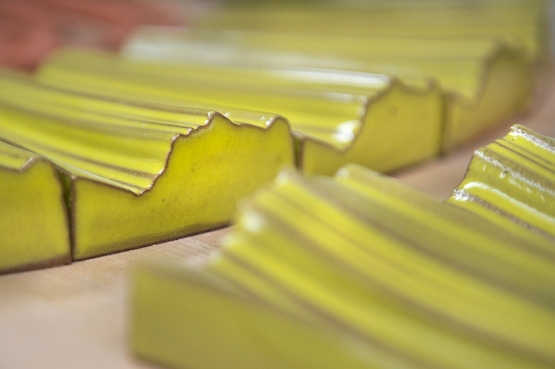



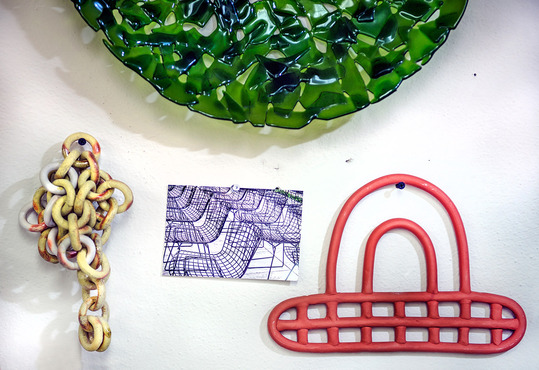
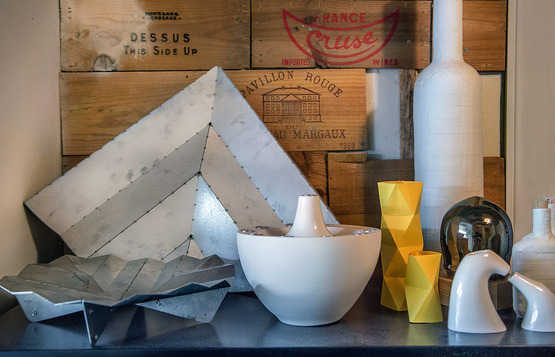

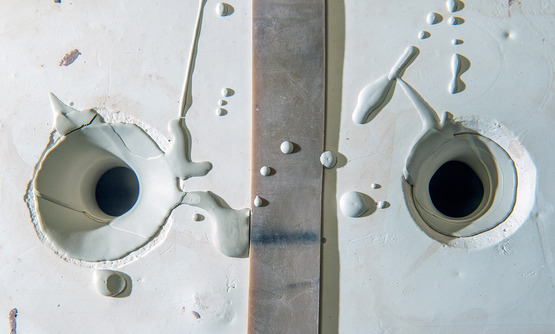
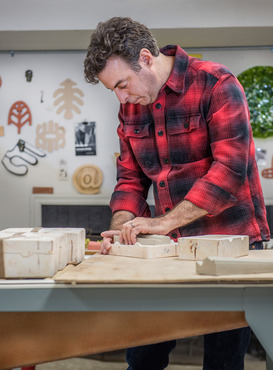

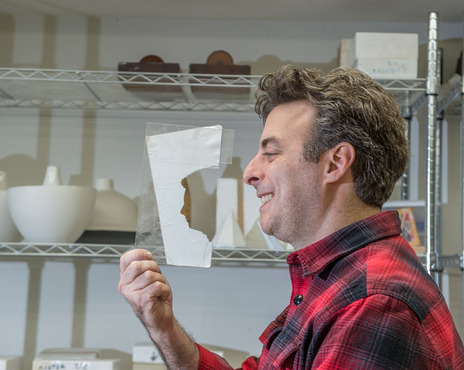
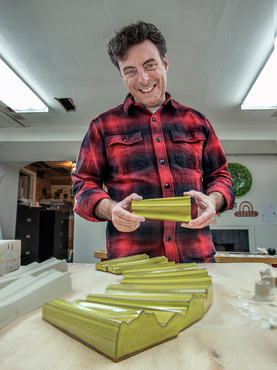









Social Feed